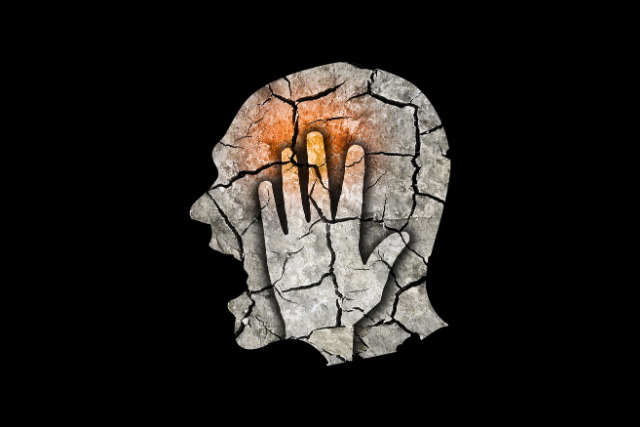
“Holding on to wrongness is like grasping a hot coal with the intent of throwing it at someone else; you are the one who gets burned.” ~Buddha
For as long as I can remember I’ve struggled with anger.
My primeval memories of my wrongness are from junior upper school, but it was virtually much older than that.
The only emotion that was overly shown in my house growing up was anger. My dad had an wrongness problem, and my mother showed no emotion at all. This is what emotional normal looked like to me—either nothing or anger.
I was the quiet, reserved kid, keeping my emotions locked away. I veiled my feelings, expressly the touchy ones, trying to hibernate any expression of vulnerability. Not knowing what to do with my feelings other than ignore them.
It was obvious to the teachers that paid sustentation and cared that I was hurting, and my wrongness showed it, but I didn’t know it. I was sarcastic and had an whet to the way I talked and interacted with others. One day, while standing in line to leave the classroom, I got bumped from behind, and without hesitation, I turned virtually and punched the kid overdue me to the floor.
As I went through my twenties trying to icon who I was and what my place in this world could be, wrongness spewed out of me at unexpected and worrisome times. It tumbled others, but it was all normal to me.
It wasn’t until I got fired from a job considering I was too confrontational toward the owner that I started to see my wrongness as increasingly well-nigh me than others or my circumstances.
One of my favorite sayings that weightier describes my view of my wrongness when then is, “I don’t need wrongness management. I need people to stop pissing me off!”
Acknowledging my problem with wrongness wasn’t easy. It required whereas shortcomings and facing deeper issues within myself, something I’d worked years to avoid. But I finally realized and wonted that my future relationships, happiness, and mental health depended upon understanding and resolving those feelings and beliefs.
My First Step in Healing – Not as Easy as I’d Hoped
The journey toward healing started with self-reflection and seeking support. Ironically, this journey to understand myself began as I was completing my undergraduate stratum in psychology.
I found a psychologist to help me unravel the ramified emotions I’d been suppressing for so many years. I’ll admit, I was hoping he’d requite me a few quick tips and tricks to alimony my wrongness under tenancy and send me on my way.
No such luck.
He explained that to truly resolve wrongness issues, I had to:
- Deconstruct my wrongness response
- Create a healthy framework for processing my feelings
- Learn new methods for communicating and expressing emotions
The process wasn’t as quick and easy as I’d wanted.
What It Looks Like to Deconstruct Your Anger
Deconstructing your wrongness ways breaking untied and examining the elements that have created it.
The process requires analyzing and understanding the underlying factors, triggers, and emotions contributing to your wrongness and its eruptions. Although it takes work and a nonflexible squint at some ugly parts of yourself, doing this leads to the constructive management of all emotions, which is an essential skill for happiness.
The key steps for deconstructing your wrongness are:
1. Evaluating past experiences
Past experiences and traumas contribute to how you respond to unrepealable situations and influence the insemination of anger. Reflecting on these experiences can help you recognize patterns and triggers.
For me, it was the influence of my father. He was both emotionally shredded from our family and blisteringly angry. Any response could be unprepossessed or hot, or simultaneously both.
Unknowingly, like every kid, I was psychologically influenced by him. And although I would have told you I wasn’t going to be anything like him, it turned out that I followed in his footsteps (until my thirties when I began to really do this work).
2. Understanding your emotions
Anger is a ramified emotion that often masks other feelings. Fear, sadness, frustration, and hurt are all difficult feelings to face. For many, including me, it was easier to get wrestling than deal with the intensity of these feelings I didn’t know how to squatter or process.
These emotions moreover created feelings of vulnerability and weakness in me that I didn’t want to see, experience, or shoehorn to. And I certainly didn’t want to show them to anyone else.
But examining these underlying emotions is a necessity for understanding wrongness and learning how to lessen and tenancy it.
3. Identifying your triggers
Everyone has things that trigger a seemingly will-less emotional response. Identifying triggers, the emotion that follows a trigger, and how your wrongness rescues that emotion is crucial.
Triggers can be external (e.g., someone’s actions, words, situations, or events) or internal (e.g., negative thoughts or memories).
When I looked closely, I discovered that most of my triggers involved my expectations of others. One such expectation is rule following—doesn’t everybody know you don’t momentum slow in the fast lane? Or that you treat others the way you want to be treated?
4. Analyzing responsive thoughts
Most of us have reinforced unrepealable thought patterns. And these thoughts significantly influence our emotions and emotional response. Deconstructing wrongness involves examining these thoughts and the resulting emotions that fuel your anger.
For instance, are you jumping to conclusions, catastrophizing, or personalizing situations? If so, your emotional response may be untempered or plane inappropriate for the situation.
I began to understand that my expectations led me to make assumptions well-nigh others that were incorrect. If you squint in the rearview mirror when driving and think well-nigh how your speed is impacting other drivers, you’d move to the right, but some people don’t use their mirrors and aren’t enlightened of what’s going on virtually them. They should, but they don’t.
Changing my expectation that everyone drives like me helped me reduce the buildup of anger.
5. Assessing responsive behavior
Responsive thoughts often initiate responsive emotions and behaviors, such as getting angry. By examining your behavioral responses and how they impact your relationships, and others in general, you’ll largest understand why it’s helpful to consider new and healthier alternatives.
I realized that my inclination toward warlike driving was a result of my wrongness at others for not pursuit the “rules,” and this was only fueling increasingly wrongness and negatively impacting me, not waffly anyone else.
6. Exploring new coping mechanisms
If you’re struggling with wrongness issues, your current coping mechanisms for the deep emotions that trigger wrongness aren’t working. You need to find increasingly constructive ways to respond to and express your feelings. Doing so will help unravel the negative thought-behavior cycle.
Part of my process was to write lanugo what triggered me, withal with my responsive thoughts and behaviors. Looking at them on paper and yonder from the emotion of the moment unliable me to see them virtuously as unhelpful and unhealthy for me.
I could then write out a increasingly well-turned and healthier response. Once on paper, I would practice those increasingly positive responses, and then weekly squint when and reread what I’d originally written and my new largest coping response to assess my progress.
7. Setting boundaries and prioritizing self-care
Recognizing your limits and establishing healthy boundaries will help prevent you from stuff drawn into situations that trigger anger. It’s moreover hair-trigger to prioritize self-care to ensure that you have the emotional resources to handle challenging situations.
One of the increasingly constructive practices for me is walking yonder for a few minutes when I finger my frustration or wrongness rising. By removing myself from a triggering situation I am largest worldly-wise to refocus increasingly on myself internally and less on the external situation.
These steps aren’t an overnight fix and really need to wilt a life-long practice. But by pursuit these steps to deconstruct your own wrongness you’ll proceeds self-awareness and emotional intelligence that can empower you to respond to difficult emotions increasingly constructively.
The Transformative Result of Deconstructing My Anger
As I worked through these steps, I was worldly-wise to develop and incorporate new ways to cope with my emotions.
This path of personal growth coincided with my pursuit of multiple degrees in psychology. So, as I learned how to help others change, I was worldly-wise to first help myself change. Now I’m the doctor giving the advice, which comes from years of training as well as my own personal experience.
Mindfulness and internal reflection have unliable me to respond to my feelings with greater emotional intelligence. I’ve learned to recognize my triggers and the warning signs of towers wrongness in the moment and implement calming techniques as a response surpassing an eruption.
But perhaps the most profound transformation came from learning to show kindness and compassion toward myself. I am now worldly-wise to unclose my mistakes, forgive myself, winnow that I am a work in progress, and recognize the need for regular emotional check-ins with myself.
Deconstructing my wrongness has opened the door to my stuff increasingly understanding and patient with others. The process has moreover helped me largest empathize with my patients, as I’ve sat where they sit and washed-up the work I recommend they do too.
I still feel anger at times—it’s a natural emotion, and it can be salubrious in unrepealable situations. I will unchangingly be increasingly prone to it than others. But wrongness doesn’t tenancy my life or negatively impact my relationships any longer.
My journey toward addressing my wrongness issues has been long and challenging, but it’s moreover been profound and life-changing. We all siphon burdens, and we heal and grow through supporting and addressing them.
Deconstructing your wrongness can be a transformative process, empowering you to understand your emotions largest and respond to them increasingly effectively. Remember, although wrongness is a natural part of stuff human, how you segregate to manage it determines its impact on your life and the lives of others virtually you.
![]()
About Dr. Kurt Smith
Dr. Kurt Smith is the Clinical Director of Guy Stuff Counseling & Coaching. He’s an expert in understanding men, their partners, and the unique relationship challenges facing couples today. Dr. Kurt is a regular freelancer to publications such as HuffPost, PsychCentral, and The Good Men Project.

